The MMX300 2nd Gen, is a new generation of Beyerdynamic’s long existing, well known, high end gaming headsets. This newer generation comes equipped with a look of absolute, resolute, class, business, and seriousness that encompasses top gaming audio precision.
If one were to desire something more lax, friendlier, customizable, with more fun and frills than the MMX300 to suit a more casual audience, one would only need to look at Beyerdynamic’s own Custom Game headsets, which I had recently reviewed here on Guru in headphone form as the Custom One Pro. The Custom Game is the One Pro, but with an added, detachable boom microphone. The Custom Game has a sound that can fit a variety of preferences from tight and detail focused, to varying levels of raw bass energy infused into its inherently warm, well balanced sound.
That being said, that is the Custom Game, THIS is the MMX300. The MMX300 has one goal: to encapsulate the precise, targeted sound of a Beyerdynamic premium audiophile headphone, and direct it towards gamers who want reference audio with razor sharp details, pristine upper end clarity, spacious battlefields, and guttural impact.
Is the MMX300 2nd Generation a headset worthy of its name? Is it, as Beyerdynamic states in the packaging, ‘Designed For Champions’? Let’s see.
Build Quality
Like every single Beyerdynamic I have ever used, from the Premium 770, 880, 990 lines, to their Pro variants, the MMX300 is pretty much in every single way designed like a 770 Pro, with outer cups that more closely resemble the DT-770 Premium line. Beyerdynamic headphones are often easy to spot by their similar aesthetics and insanely rugged build quality, with the MMX300 being no exception to this rule. This is German engineering, and it shows.
Headband:
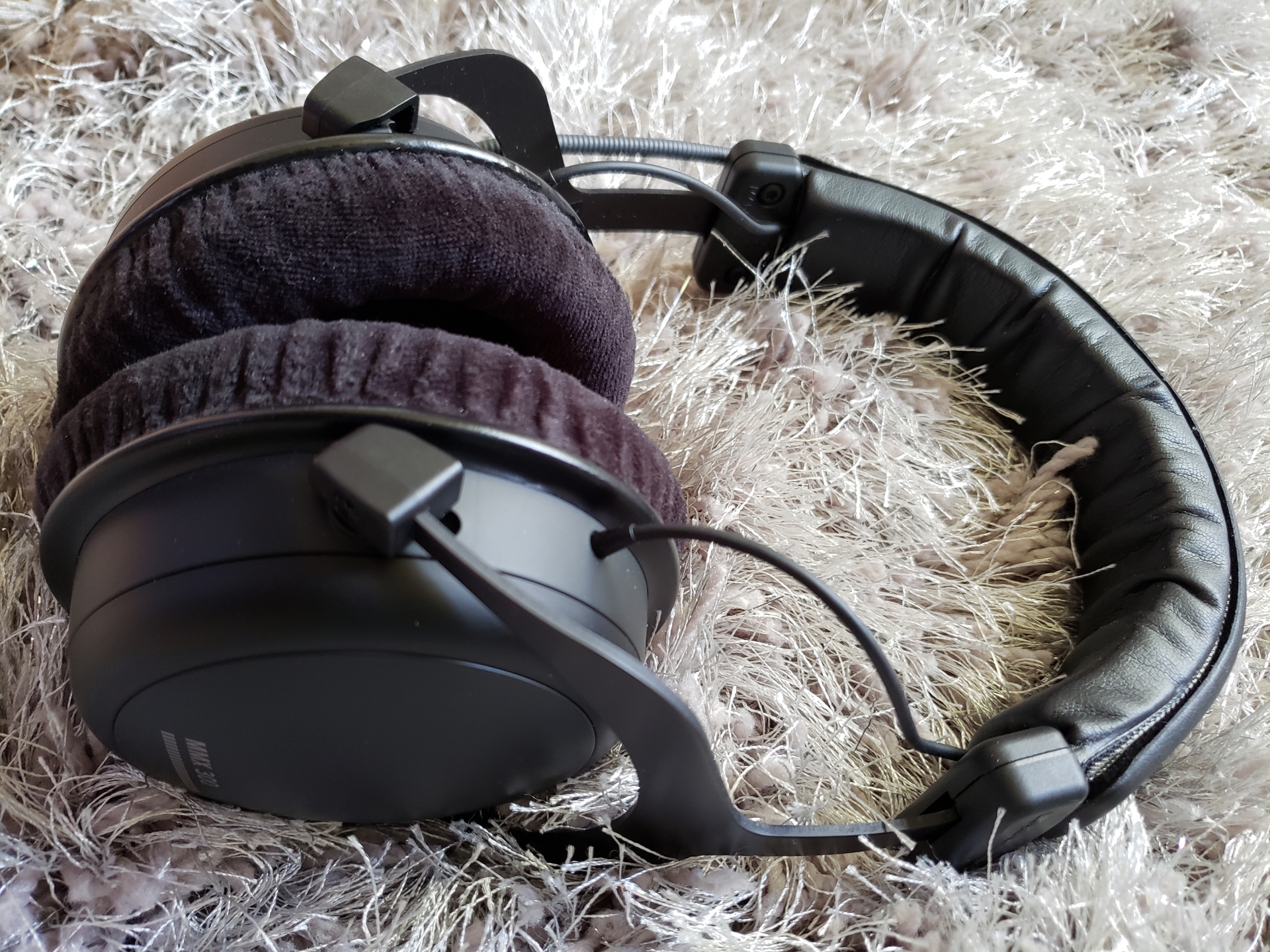
I think Beyerdynamic has used this headband style for many, many years now, and for good reason. Its steel, coated in ‘business’ black, is quite possibly the most durable headband of any headphone I have ever experienced. The majority of the headband is covered in a generous plush padding covered in a faux leather material, which is secured around the steel headband with velcro. If undone, you’ll note the steel shell and single audio cable hidden inside. I wouldn’t remove the headband padding unless absolutely necessary otherwise. No reason to expose it, really.
The yokes are as ancient in design as the headband, and equally as rugged, indestructible, and dark. They still remain as hard as ever to adjust if you lack the experience of using these kinds of Beyerdynamic headphones. There are an ample amount of dots lining the inside to show extension length, though with my big head, I had to fully extend the MMX300 to fit my head comfortably (7 dots on each side shown).
Cups:
Like the Custom One Pro/Game, and 770s, the cups are made of what I assume to be some strong plastic. The top side of the outer rim is where the cable entries are, and like the Custom Game/One Pro and Premium 770/880/990 headphones, may be the only areas in the entirety of the headphone that may cause some warning as there is a potential that you may accidentally snag the cables on something if not careful. Under normal use I don’t see this being a problem, however I just suggest exercising some caution in where you place and store the headphones.
The outer left cup holds the gooseneck microphone in the center, that is quite malleable to allow for optimal distance from mic to mouth. The microphone is about 8 inches from base to mic and can swivel almost 180 degrees top to bottom. I personally like to place the mic upright, following the headband arch when not in use.
The bottom of the left cup is where the TRRRS 3.5mm input is located. No locking mechanism of any type, just direct plug and play. I have to say, this is the first time I have ever seen a headphone/headset that uses a TRRRS cable. First time for everything.
Ear pads:
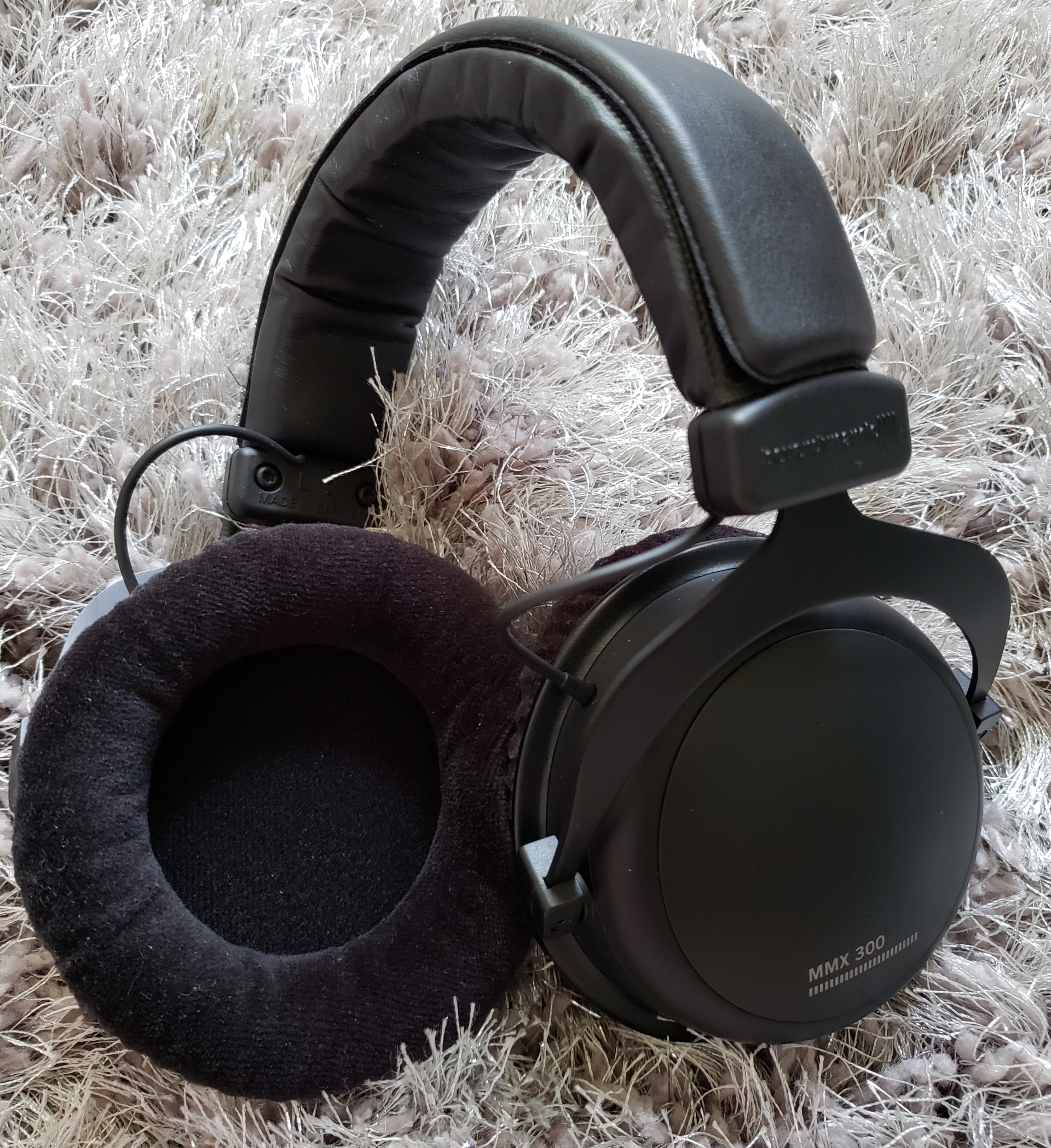
Unlike the Custom One Pro/Game’s synthetic leather (which I actually find quite comfortable and among the better ones of its ilk), the MMX300 has black velour pads that isolate much better than typical velour pads would ever have any excuse to. These pads are designed for closed headphones and thus control noise leak and isolation more like dense leather pads. Though not as plush and soft as DT-880/990 velours (which have very little noise control), I’d still consider the MMX300’s black velours to be among the most comfortable pads I’ve ever used for closed headphones. They can easily be removed from the headphones and replaced if need be.
Cables:
One 2.5mm (8.2ft) cable with inline remote control for PC. The inline remote is located about 12 inches down from the headphone, and has a volume slider for easy volume control, though the cable that came with this MMX300 has a (MINIMAL) slight right channel bias at anything less than max volume on the slider. I’m talking VERY slight, so a non-issue as balance was still very centered. There is also a long button on the side that can be pressed on both ends for accepting calls, media control and temporary mute (as stated by the Beyerdynamic MMX300 downloadable pdf). The face of the inline remote has a mic mute switch. At the other end of the cable, it splits into two smaller cables that terminate into 3.5mm audio and mic jacks for PC use.
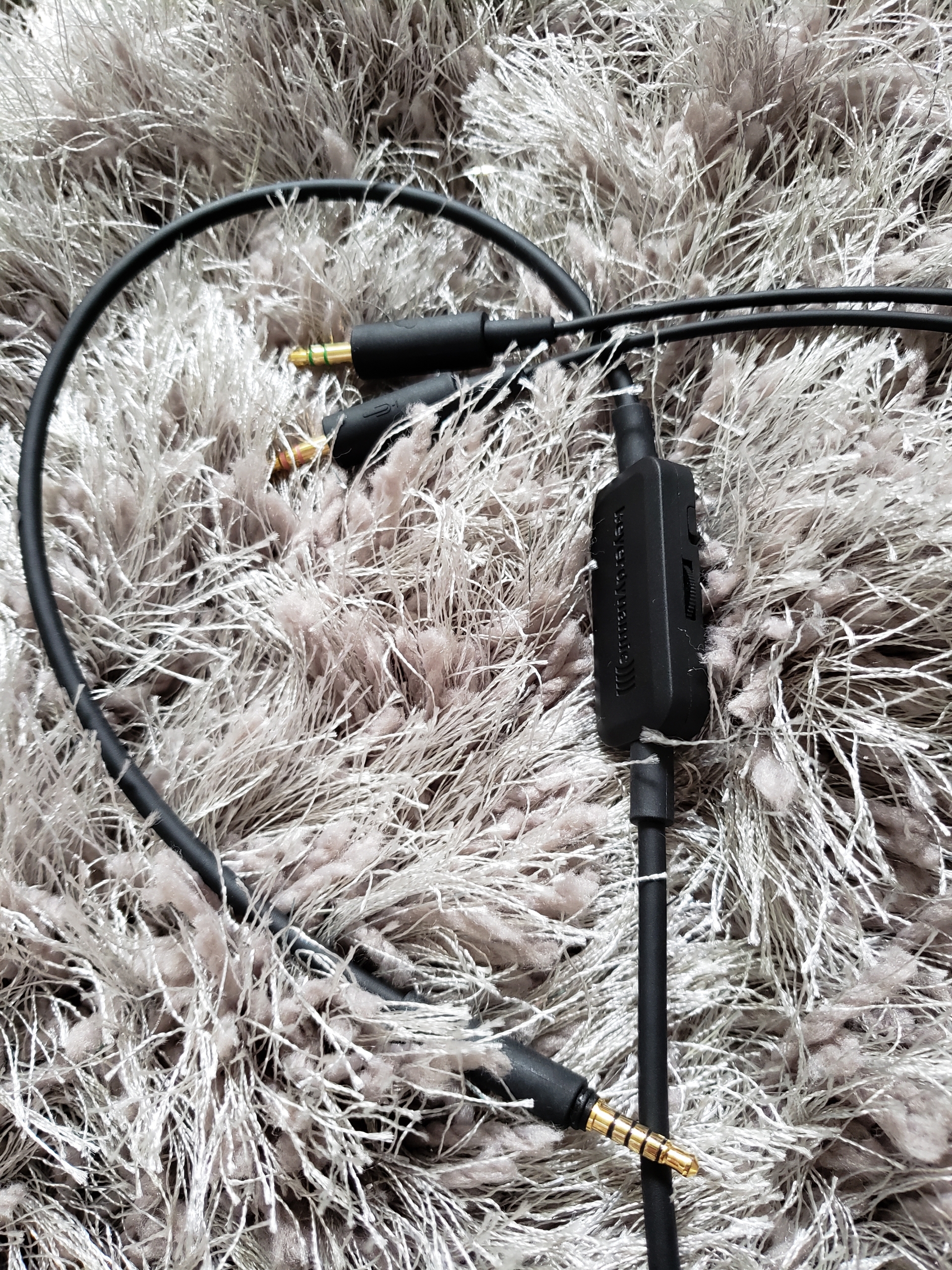
The other cable is a 1.2m (3.9ft) cable that is similar to the first with the same inline remote, with the difference between that it terminates into a combined 3.5mm TRRS jack for console/phone/laptop use.
Final Build Impressions:
The MMX300 is unsurprisingly built like expected from a mid-fi Beyerdynamic headphone, and that’s a very good thing indeed. Build quality is the last thing one should ever complain about with the MMX300. One last thing to note is that the MMX300 doesn’t fold or collapse in any way, and thus leaves a large footprint, so it’s not exactly portable friendly. Transportable? Sure, with the included case, but not something I’d keep around my neck and walk around with.
Accessories

The MMX300 comes with the aforementioned cables, a 6.3mm (1/4″) adapter plug, and a really nice clamshell style case that zips up. You’ll have to adjust the headset to it’s smallest extension for it to fit the case properly, which may be annoying for those with specific adjustments to the headband.
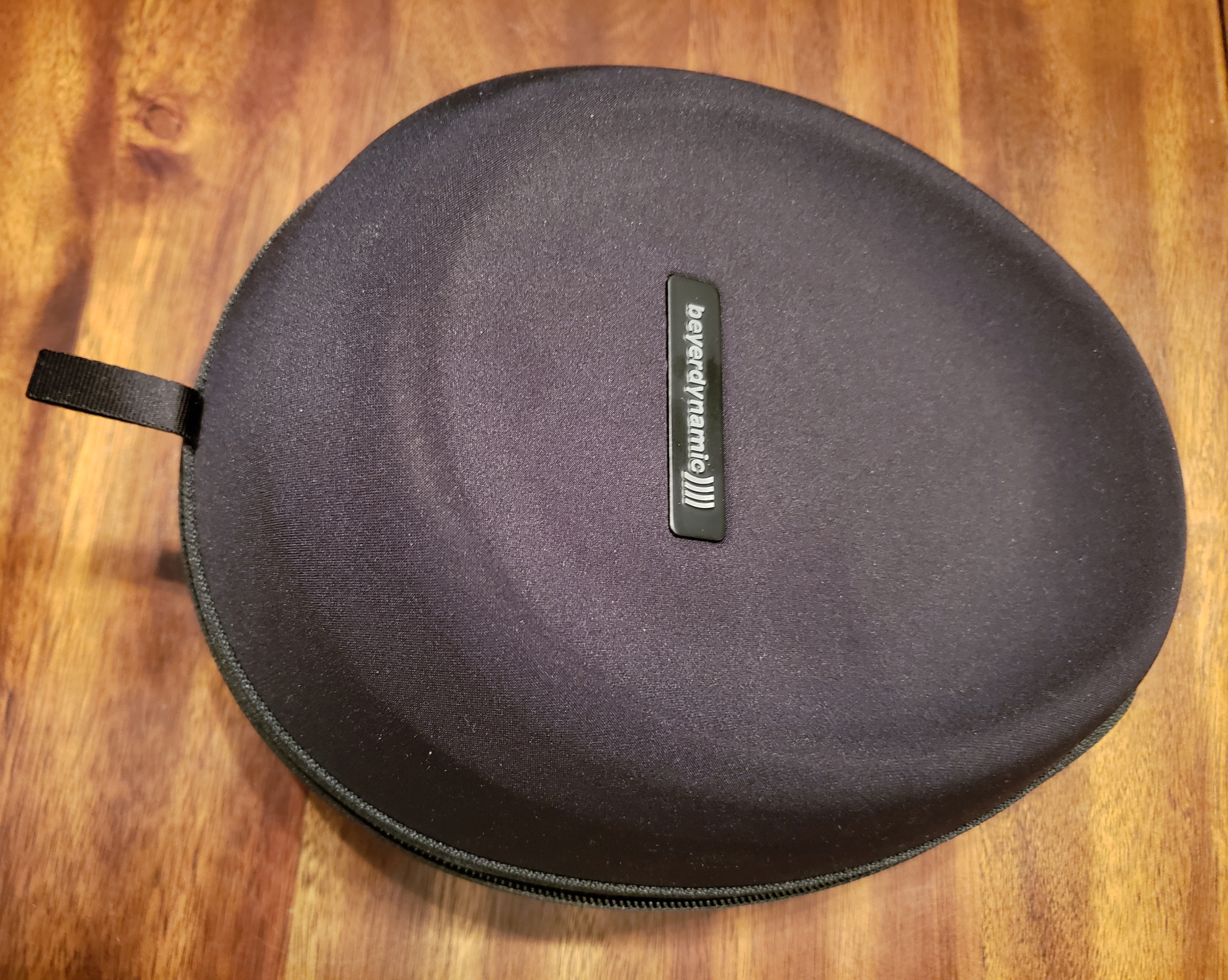
Comfort
Comfort is excellent on the MMX300. To elaborate…
Weight:
While it may not be the lightest headphone/headset out there, it feels substantial, but not overwhelming. I’d say the weight is around average as to what to expect from headphones. Fortunately the distribution of weight is excellent, so there is little to no head and neck fatigue.
Headband:
The padding is very soft/plush and wraps around the curvature of the head perfectly, no hot spots or pressure points. This is definitely a headphone you can wear all day without the need to shift the headphone around every hour or so.
Ear Pads:
The black velour pads on the MMX300 don’t build up heat like synthetic leather, and rest comfortably around the ears. Your ears may not be free inside the pads, and may touch up against the driver cover, but not in an uncomfortable manner. The driver cover may touch, but doesn’t press down on the ears.
Clamp:
While the MMX300 shares a lot with the Pro DT-770 in design, it seems clamp has been reduced (can’t confirm this). The MMX300 has what I feel is less clamp than the Pro line of DT-770s, but more than the Premium line which felt a bit loose. There is moderate, but welcome amount of clamping force. Enough for a secure fit, but not enough to cause a strong amount of pressure to the masseter muscle where the ear pads rest below the ears (which can be a problem spot for many full sized headphones). Having a Custom Game/Custom One Pro nearby to compare, it seems they are similar in clamp but the synthetic leather pads on the Custom Game makes the headset feel clampier.
Overall Comfort Impressions:
The MMX300 is just one of those headphones you can wear practically all day with little fuss. Doesn’t weigh as much as planars, there’s no sweat buildup, no problematic hotspots or sore spots from the headband, and only has a moderate amount of clamp that falls in a range that is comfortable without being too loose or clampy. It isn’t as comfortable as the Premium line of DT-770/880/990s, but it’s not so far behind. Not much more I can say except, it’s quite excellent.
Noise Isolation/Leakage
Due to the velour pads made for closed headphones, the MMX300 controls noise leak fairly well. Leakage shouldn’t bother anyone even in the immediate vicinity. Isolation from the outside world is quite good, but not as good as other headphones with synthetic leather or leather padding. If you’re listening to anything at moderate volumes, you’ll definitely have to remove the headset to hear anyone or anything properly. For supreme isolation, where you want to completely block off all external noises from the outside world, I wouldn’t recommend the MMX300, but for most cases, the MMX300 does just fine.
Sound
It has been an extremely long time since I last heard a DT770 of any variant, so unless Beyerdynamic specifically tells me this new MMX300 is based off the DT-770 32ohm drivers, I honestly could not state as such. All I do know is that the MMX300 doesn’t sound like the DT770 Pro 80ohm, nor does it sound like the Custom One Pro/Custom Game. The DT-770 Pro 80 had a deep, resonant bass, considerable scoop in the midrange, and a spiky treble. It was a slightly muffled sound mainly catered to clubheads who wanted a deep bass, and energetic treble. The Custom One Pro/Game had a much more balanced tonality, with a warm character, and well integrated midrange and treble. Of course you could change the bass to be much more prominent and boomy, but I’d venture a guess in thinking most people would just have one bass port open for a warm, fun, but balanced sound.
What differences mark a premium for the MMX300 over something like Beyerdynamic’s own Custom Game? Let’s see…
Bass
The MMX300 has what can be considered a very vibrant, rumbly bass that is quite immersive without being intrusive. Unlike the DT-770 Pro 80ohm which had a very deep, omnipresent bass that was a bit sluggish, the MMX300’s bass has a very welcome rumble with decent decay and texture that doesn’t overly envelop the rest of the sound. It isn’t the most neutral and fastest bass, but it is at a good, enjoyable level without much drawbacks. Testing the frequencies, the rumble can be heard and felt as low as the 25hz range, so yes, this baby reaches down LOW with a particularly impressive presence at 35-50hz, which to me is a sweet spot in bass to my ears. It definitely continues past that to its mid and upper bass ranges without any problems whatsoever. By nature of the v-shaped sound, the bass is above neutral in emphasis, but it’s not a boomy, basshead level’s sound. It’s just emphasized enough for those who enjoy a bit of thump without trampling over other details.
Quality: ****
Quantity: ****
Midrange
Putting it frankly, the midrange is the weakest aspect of the MMX300 sound, though it’s not saying much as it is still in the realm of being decent. Either by the MMX300’s v-shaped curve, or the larger than average soundstage for closed headphones, the midrange is spaced a little farther back than I consider a neutral level, and some aspects of the midrange sound distant and diffused. The MMX300 is still a very detailed headphone, but it’s worth noting that the midrange could stand to be sharper in definition. The lower midrange has a warm, soft character which contrasts the upper midrange/treble sparkle and crispness.
Quality: ***
Quantity: ***
Treble
The upper range is what I consider to be typical of Beyerdynamic in the mid-fi, which is to say sparkly, a little hot, and lively. Though not in the realm that I’d think it being polarizing, some people may prefer something with a smoother, softer upper range, as it may cause fatigue for those with more senstitive ears. It’s no DT990 in terms of treble emphasis, but it does have its moments. On the positive side, the treble is sharp and detailed, and gives a razor sense in pinpointing high end audio cues in video games. Strongest areas upon testing the frequencies were at around 5.5khz, and 8khz, which had some definitive prominence and hotness.
Quality: ****
Quantity: ****
Soundstage
The soundstage is quite large for a closed headphone with very good separation of audio cues. The DT-770s have always been known for having a very good soundstage, and this strength has been passed on to the MMX300.
Due to the spaced back midrange, there is an even greater sense of space in music, which may or may not be up to personal preferences as to whether that’s good or not. As this is a headset marketed towards gamers, I feel this is one aspect of the MMX300 which suits gaming more than it suits other forms of media and music.
Soundstage with virtual surround processing:
As a gamer who places a lot of importance on soundstage in virtual suurround, I was quite happy to find that the MMX300’s inherently large soundstage translated amazingly well into virtual surround with processors such as Dolby Headphone, Creative’s SBX, Dolby Atmos, and a few others. The closed nature of the MMX300 seemingly affected the illusion of a large room of speakers in a positive manner. This isn’t usually the case with closed back headphones, but ones with large soundstages do benefit from not having interference of outside noises. Paired with the excellent sharpness of the minute details, the MMX300 makes a stellar gaming headphone. The MMX300’s prestige as a serious gaming headset is well warranted here.
Clarity
The MMX300’s clarity depends on whether you’re talking about its bass, its midrange, or its treble. The bass has a decent speed and decay with good texture, and thus leaves the lows clear and unimpeded by boominess or sluggishness.
The midrange’s spaced back nature and slightly diffused definition is perhaps the biggest weakness in terms of clarity, though it is by no means veiled or muffled. It’s just not a particular strength in the MMX300’s sound.
The treble’s razor sharpness and prominence leaves the tiny details to shine through without obstruction.
Sound Signature
The sound signature is best described as warm with a crisp treble range. The mildly above neutral bass emphasis, slightly spaced back midrange, and energetic peaks in treble leave the MMX30 with a v-shaped signature. Not as tonally balanced as a DT-880, and not as dry and bright as the DT990. It falls somewhere in between the two. I personally would say it’s more like a closed-back DT880 with bass that reaches lower. Perhaps that is what a typical DT-770 sounds like, though I only have experience with a considerably different than typical sounding 80ohm variant 770 Pro, and a undoubtedly broken DT-770 600ohm with bass that would embarass club heads with its overwhelming boominess. I highly doubt it was purposely made to be that way, so I don’t count that headphone as true experience of a 600ohm DT-770. So a closed-back DT880 with more lower end is how I’d like to describe it.
Amplification
Though the MMX300 is a 32ohm headphone, and is targeted at gamers, I feel that the MMX300 at best gets to a slightly lower than moderate volume off my cellphone, and the PS4 controller’s headphone jack. I feel the MMX300 needs at least a desktop PC’s integrated soundcard’s level of power and warrants at the very least a decent portable amp to power effectively and loudly off smaller devices. It sounds a little restrained otherwise. It still sounds good, mind you, just a little lacking in energy and volume.
As a premium mid-fi level headset, I personally recommend some decent amplification to get the best out of the MMX300. Comparing my PC motherboard’s Realtek audio chipset to my Creative X7’s better dac and amp, it was a no brainer to which sounded better and could get louder. So while an integrated soundcard off a desktop PC may be enough, I feel there is more potential to squeeze out of the MMX300 with better sources and stronger amplifiers.
I again would recommend something like the Beyerdynamic Custom Game as a much easier to drive headset if you don’t wish to deal with more than just the headset for your gaming needs.
Gaming

Marketed for gamers all over the product page for the MMX300, you better believe it better deliver. The MMX300 is undeniably a very strong gaming headset with fantastic immersive qualities in its bass and soundstage.
The bass faithfully excecutes explosions and other ground shaking impacts with ease. This is one fun gaming headset.
The MMX300 may not be the most detailed headphone in terms of midrange focused sounds, but it is still good and beyond satisfactory here. Unless you are the most hardcore gamer who needs 100% focus on just micro details, I don’t see many complaints here especially for gaming needs.
Treble details is a highlight for nitpicky gamers looking for the sharpest of pindrops, which the MMX300 excels in. There is plenty of sparkle and vibrancy to be found.
The large soundstage paired with its amazing virtual surround capabilities, makes the MMX300 one of the best closed gaming headphones/headsets for accurate positional audio cues that I’ve heard.
The MMX300 can do all forms of gaming well, with a lean towards fun, casual gaming, though is more than capable as a competitive gaming headset. As it is, this is one of those “Multi-purpose” headsets, more than a specialty headset that is focused on one thing or another.
Microphone
I found that the microphone quality sounds crisp, clear, with no hints of sibilance, with a pretty realistic tonal balance. I wouldn’t expect any less from Beyerdynamic, as they are one of the best companies in terms of audio recording devices.

Personal Recommendations
If you’re interested in the MMX300, I’d say its strengths lie in gaming, and electronic music with more emphasis on bass and treble energy. For movies and other general media where you may want a stronger focus on the midrange, I’d say there are better alternatives like its sibling, the Custom Pro One/Custom Game which has/have a more integrated midrange, despite losing in many other aspects of sounds like soundstage and overall clarity/detail. Make no mistake, the MMX300 is a noticeably better sounding headset, but the Custom Game has a tonal balance that may more agreeable to some.
Final Impressions
I find the MMX300 to be a highly enjoyable gaming headset, that brings with it a fun amount of punch, vibrant energy and enveloping soundstage. This is one for those who prefer a v-shaped sound signature where the midrange takes a slight backseat compared to the bass and treble ranges. It has an obvious dynamic sound, that caters to those who prefer it over utter balance and linearity.
Personally, I’m the type of person who likes having one main, tonally balanced headphone, and one that is energetic, punchy, and a stark contrast to the main headphone. The MMX300 fits the bill as the latter, and thus if that’s what you want in a headphone/headset, the MMX300 makes a great choice.
Likes and Dislikes
Pros:
- Bass texture, energy, depth, speed
- Soundstage
- Energetic sound
- Comfort
- Pairs exceptionally well with virtual surround
- Gaming
- Upper end detail
Cons:
- Midrange may be a little distant and diffused/blurred
- Treble can be hot/tizzy at times
- Could stand to be a little more linear/balanced as Beyerdynamic’s high end gaming headset
https://north-america.beyerdynamic.com/mmx-300.html
Price: $349 USD















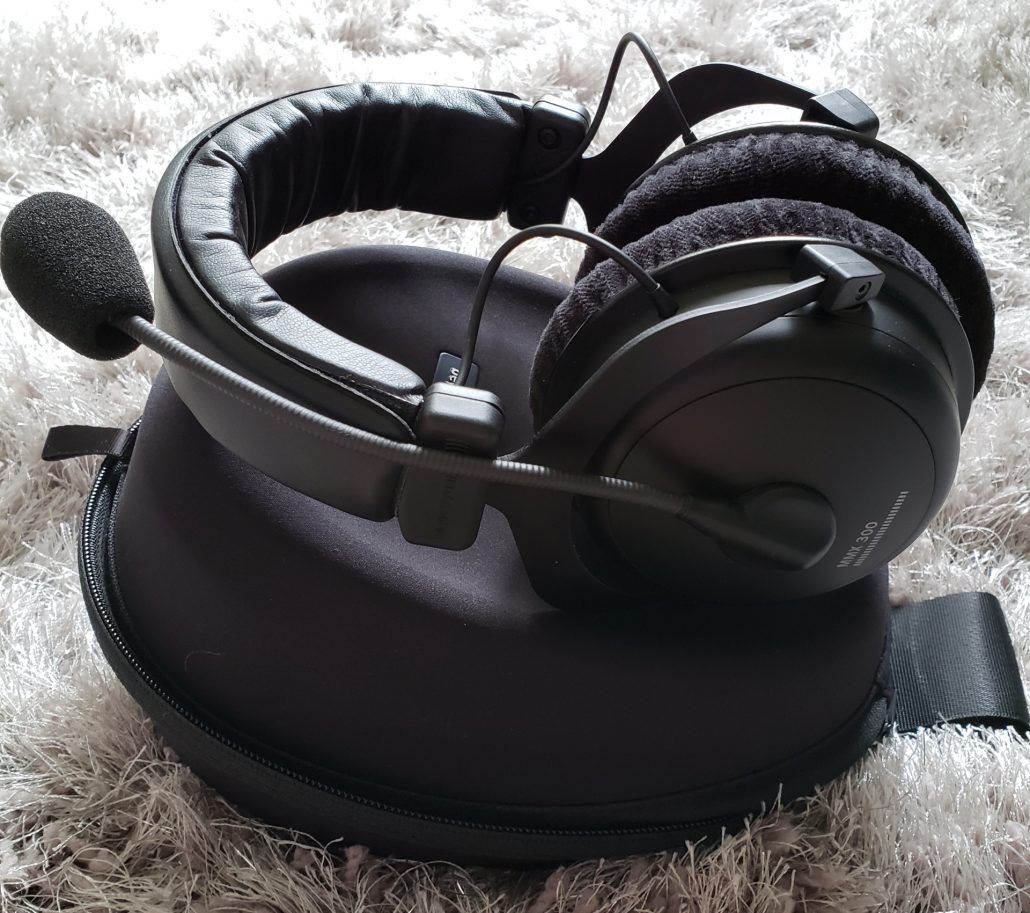
Want to join discussion?
Feel free to contribute!